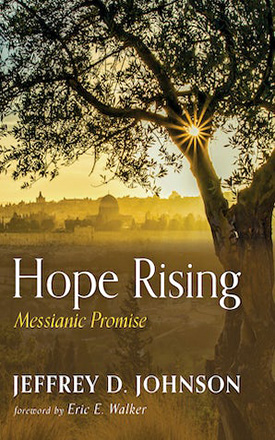Israel Today Resources:
-
 Hope Rising, Messianic Promise
Recommended donation: $20.00
Hope Rising, Messianic Promise
Recommended donation: $20.00
Add to cart
-
 Song of Song: The Greatest Lover
Recommended donation: $18.00
Song of Song: The Greatest Lover
Recommended donation: $18.00
Add to cart
-
 Divine Mysteries
Recommended donation: $15.00
Divine Mysteries
Recommended donation: $15.00
Add to cart
-

First Century Worship
Twenty-first century worship does not look like first century worship.  C.S. Lewis said, “The perfect church service would be one we were almost unaware of; our attention would have been on God” (Letters to Malcom: Chiefly on Prayer, Glasgow: Collins & Sons, 1964, 6).  Paul told Timothy to guard the deposit of faith given (1 Tim. 6:20).
Early believers centered their worship around the temple, or synagogue, and being with one other.  They met daily in the temple, and from house to house.  They broke bread every time they met (communion, and then the agape feast, we would call this a potluck, or in Jewish and Messianic circles, Oneg, or Oneg Shabbat). They continued with the Jewish worship practices, keeping the liturgical cycle of daily prayers at set times.  They would sing the songs, pray the prayers, and observed the major feast days (Acts 2:46; 3:1; 20:16).
Luke tells the story that the believers gathered in Solomon’s Portico, which is in the temple.  The crowds grew, and the sick were brought in to be healed.  They were arrested, put in jail, and an angel opened the doors of their cells, and told them to go back to the temple and speak to the people the whole message of this “Life” (Acts 5:12-20).
The early church would have observed the liturgy of the temple, or synagogue.  The writer of Hebrews tells us, “we have such a high priest, who has taken His seat at the right hand of the throne of the Majesty in the heavens, a minister in the sanctuary and in the true tabernacle, which the Lord pitched, not man” (Heb. 8:1,2).  This is speaking of Jesus, our High Priest. Notice the word “minister” in verse two, “Leitourgos” in Greek, or in English, “liturgist.”
Jesus is our “liturgist” in the heavenly sanctuary and true tabernacle. The tabernacle, and temple were designed based on the logistics of the heavenly tabernacle, as communicated to Moses on Mt. Sinai. This is truly a mystery, and wonderful to contemplate.
What is liturgy?  Liturgy comes from the Greek word leitourgia which means, “the work of the people.” It is believers worshipping, offering praise, prayers, and readings collectively together within an assembly.
Alfred Edersheim, in his classic work, The life and Times of Jesus the Messiah: Volume II, (London: Longmans & Co., 1899, 436-450) explains six main components to synagogue worship: 1) The Litany; 2) The Confession; 3) Intercessory Prayer; 4) Scripture Readings; 5) Preaching; 6) Benediction.
In Acts 11, we find Barnabas was sent to find Saul and ended up in Antioch with a Gentile congregation.  Here is where believers were first called “Messiah-Like” or “Christian.”  The year is approximately A.D. 38.
In Acts 13, we learn of the first missionary journey. “While they were ministering to the Lord and fasting, the Holy Spirit said, ‘Set apart for Me Barnabas and Saul for the work to which I have called them'” (13:2).  The word “ministering” is liturgizing (Gr. leitourgounton).  The year in Acts 13 is approximately A.D. 46.  Therefore, as early at A.D. 46 both Jewish and Gentile congregations were worshipping in a liturgical fashion, fashioned after the temple/synagogue, however, with a very important difference.
Early Jewish believers during Shabbat would attend the temple, or synagogue and pray the prayers, sing the songs, offer praise to God, and recite and read the scripture only to realize all the liturgy was devoid of Jesus the Messiah.  They could not worship the Lord in the synagogue or temple freely.  Shabbat worship was devoid of the message that messiah Jesus had come, died and resurrected.  And, at the same time, they did not want to disconnect from their holy traditions and Jewish culture. It was quite a dilemma for the early church.
The remedy was to keep the Jewish traditions on Shabbat (Saturday: Friday evening until Saturday evening).  Then on Saturday evening (which is Sunday morning, the day Jesus resurrected) they assembled. Often, they met secretly for fear, in homes continuing praying the prayers, singing the songs, reciting and reading scripture, however with one big difference. Now they would include the worship of Jesus, singing songs about Him, and reading scripture about Him, plus, the Lord’s Supper, i.e., communion was observed each time they would meet (Acts 20:7; 1 Cor. 10:16,17; 11:17-34).
They would gather on Saturday evening, worship liturgically, eat the agape feast (oneg), followed by communion.
The reason for the persecution from the Jewish religious community (i.e., Saul), was not that they met to continue with songs, prayers and readings, it was due to the fact, they began to worship Jesus. Jews were to worship only God. The idea of God becoming Man was anathema to the Jewish mind.  John wrote that Jesus is God.  To worship a man as God was the trigger that caused the persecution, led by Saul of Tarsus.
An amazing history.Â
I have experienced a few congregations, both Gentile and Jewish where there was a true sense of holiness, worship and the presence of God. It was not about the teacher, singer, musician, or production, it was about God.
Whether liturgical, traditional, evangelical, or a western messianic expression of worship, may, God be glorified and not man, nor the production of service.
As C. S. Lewis said, let us be “almost unaware of” the service, and that “our attention would have been on God.”
We feed children and Holocaust survivors!  The generosity of friends like you is key to our mission. Thank you for your support and prayers.  Contributions are tax-deductible as allowed by law.
Shalom,
Until He comes, we are
Together Under His Wings,
Dr. Jeff
Time is short, Life is precious, and Jesus is coming soon!


